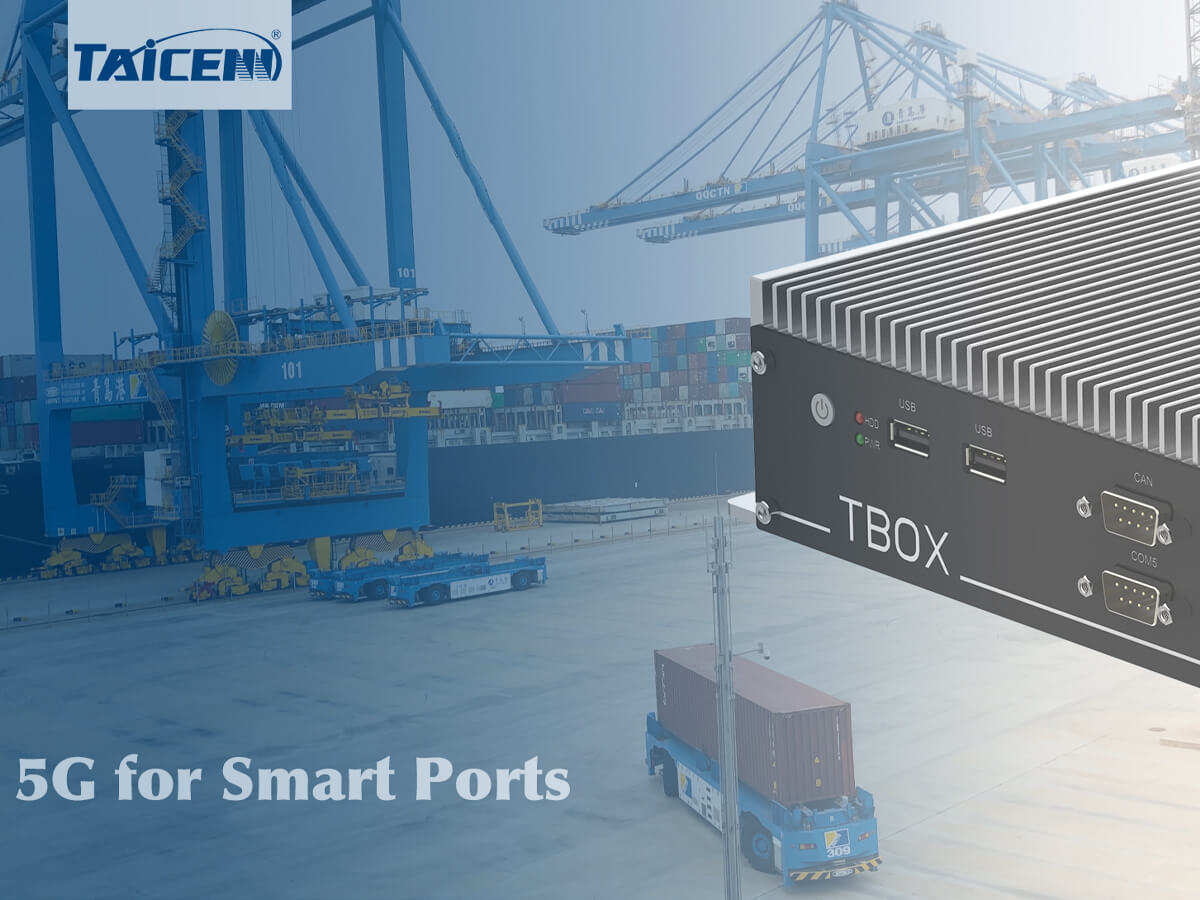Background:
The seaport is a hub for the transportation of land and sea logistics. According to statistics, 2/3 of the total global trade will pass through the port. With the development of the world economy, the port throughput has increased year by year with the global economic growth, which has brought new challenges and pressures for ports, such as the rising labor costs and the shortage of labor resources.
Using the information physical system as a framework, through the innovative application of high and new technology, the logistics supply and demand side communication is integrated into the all-in-one system of gathering and transportation, greatly improves the comprehensive processing capacity of the port and its related logistics parks for information and related resources optimized configuration capabilities. The intelligent supervision, intelligent services, and automatic loading and unloading have become the main forms of presentation, and can provide modern logistics with a high-security, high-efficiency, and high-quality service of a new type of port.
Smart port is an inevitable trend of future port development. Through remote control, automatic control, automatic driving, intelligent monitoring and other technologies to achieve cost reduction and efficiency increasing has become a common demand of global ports. Taking the crane control as an example, after remote control is implemented, the man-machine ratio of the operator in the tire crane scene is increased, which not only greatly reduces the labor demand, but also greatly improves the working environment, thus completely solving the problem of difficulty in recruiting workers. In addition to crane control, the intelligent scenarios to be implemented in the port also include efficient automatic driving IGV (used to replace manual driving collection card) or 4G network-based AGV (automatic guided vehicle), machine vision intelligent monitoring, remote auxiliary maintenance. These intelligent scenarios will further alleviate the pressure of labor demand at the port and greatly improve the efficiency of port operations.
Industry Requirements:
In the past, ports mainly used fixed networks (optical fibers, waveguides) to build communication infrastructures, with high deployment and O&M costs, poor mobility, and weak coverage Wi-Fi problems, poor stability, and reliability. The limitations of traditional communication technologies have increased the cost of new digitizing-built ports, reduced the flexibility of application scenarios, and brought insurmountable obstacles to the transformation and upgrading of old ports. The arrival of 5G has brought new opportunities for the upgrading of the global port industry.
In the AGV application of smart port, the industrial computer serves as the vehicle-mounted communication terminal of the Internet of Vehicles, with the port cloud control platform, using 5G wireless connection and remote monitoring, thereby to save labor costs and improve efficiency.
TAICENN‘s solutions and products:
As the AGV communication terminal, TBOX’s main function is to serve as a central gateway to complete the communication between the internet and the mobile network (5G, backward compatible with 4G), and complete functions such as communication security protection, information interaction, and high-precision positioning. The built-in SIM card communicates with the operator. In terms of information interaction with each ECU in the car, receives information sent by other ECUs in the car, including basic vehicle information, vehicle status information, vehicle failure information, etc., and sends control commands from the port cloud control platform to each relevant ECU, and realize the corresponding control. TBOX needs a built-in high-precision positioning module, which is used for the positioning of IoV.
Combined with the analysis of application requirements of this project, the TBOX-2831 industrial computer of TAICENN’s solution product is perfectly used in the AGV of smart port. TBOX-2831 is based on the standard product TBOX-28X0 series, is a ruggedized & compact, fanless embedded modular industrial PC system, equipped with the latest 8th generation Intel Whiskey Lake low power and high-performance Core® Core i7 Quad-core eight-threads processor. TBOX-2831 industrial computer designs with rich IO interfaces, 2 Ethernet ports, 8 USB ports (4 USB3.0 ports), 1 CAN port, 8 GPIO function with isolated interface, 1 HDMI, 1 VGA, 6 RS232 (support 1 RS485) serial port, equipped with Huawei 5G module, can meet customer port AGV system requirements.
Product Features:
● Rugged, compact & fanless design;
● Intel Whisky Lake 8th generation Core quad-core eight-thread i7-8665U processor;
● DDR4 memory, single channel, maximum capacity up to 16GB;
● Supports 1 * 2.5-inch SATA and 1* mSATA, HDD and SSD;
● 2 Intel Gigabit Ethernet ports, 1 CAN port, suitable for AGV bus communication protocol;
● 8-channel GPIO, with isolated, 8 USB interfaces (4 USB3.0);
● DC 12~24V voltage input, with overvoltage, overcurrent and polarity protection;
● 6 RS232 serial ports, support 1 RS485 serial port, 1 HDMI and 1 VGA;
● Expansional Huawei’s latest 5G module through Mini-PCIe expansion card, backward compatible with 3G/4G communication.













